How to Choose Ski Equipment for Beginners and Different Ski Types on the Slopes
Our guide simplifies the process, offering insights for beginners and seasoned skiers alike. Discover essential tips on selecting the right gear and understanding ski types to conquer the slopes with confidence!
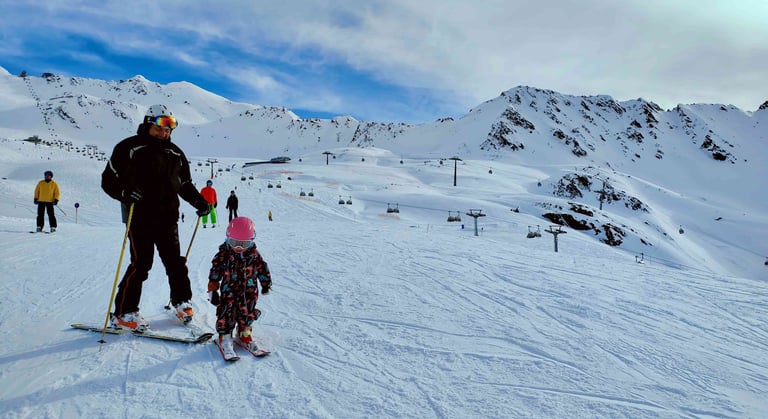

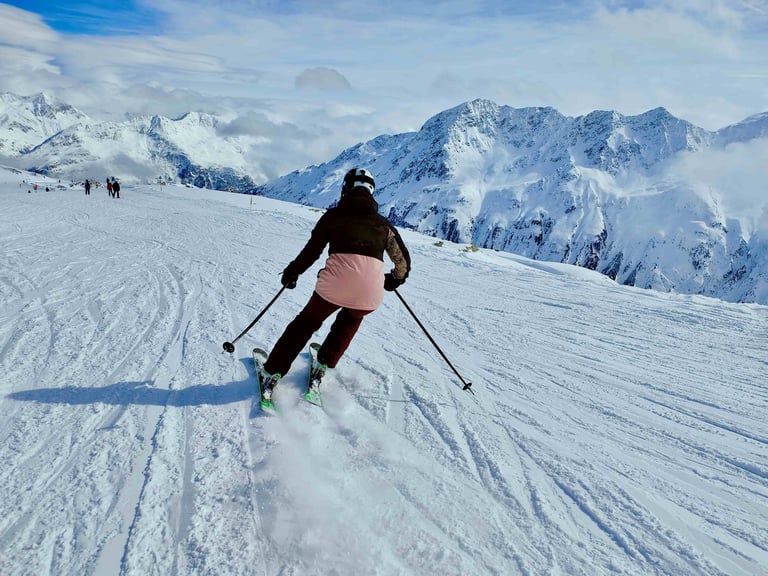

Welcome to the exciting world of skiing! Whether you're a complete beginner or have some experience on the slopes, choosing the right ski equipment is crucial for an enjoyable and safe skiing experience.
In this comprehensive guide, we'll walk you through the process of selecting the right ski equipment for your level and explore the different types of skis available on the market.
Understanding Your Level:
Before diving into the world of ski equipment, it's important to determine your skiing level. Skiing levels generally fall into three categories: beginner, intermediate, and advanced.
Beginner:
If you're new to skiing or have only skied a few times, you fall into the beginner category. Beginners typically stick to groomed slopes and ski at slower speeds, focusing on developing basic skills and building confidence.
Intermediate:
Intermediate skiers have more experience on the slopes and are comfortable skiing on a variety of terrain. They can navigate steeper slopes and are starting to explore different skiing techniques and styles.
Advanced:
Advanced skiers are experienced and skilled on the slopes. They can handle challenging terrain, such as moguls, powder, and off-piste skiing. Advanced skiers often have their preferred skiing style, whether it's carving, freestyle, or racing.
Choosing the Right Ski Equipment
Now that you have a better understanding of your skiing level, let's dive into the process of choosing the right ski equipment.
There are three main components to consider: skis, boots, and bindings.
Skis:
Skis are the most important piece of equipment and come in various shapes, sizes, and designs. Here are a few factors to consider when choosing skis:
Length: The length of your skis should be determined by your weight, height, and skiing ability. As a general rule, shorter skis are easier to maneuver for beginners, while longer skis provide stability and speed for more advanced skiers.
Width: The width of skis, also known as waist width, affects their performance on different types of snow.
Narrower skis (less than 85mm) are better for groomed slopes and hard-packed snow, while wider skis (over 85mm) are more suitable for powder and off-piste skiing.Flex: The flex of skis determines their stiffness. Softer flex skis are more forgiving and easier to control, making them ideal for beginners.
Stiffer flex skis provide better stability and responsiveness, which advanced skiers often prefer.Shape: Skis come in various shapes, including traditional camber, rocker, and a combination of both.
Camber skis have an upward arch in the middle, while rocker skis have an upward curve at the tip and tail.
Each shape offers different benefits, so consider your skiing style and the type of terrain you'll be skiing on.
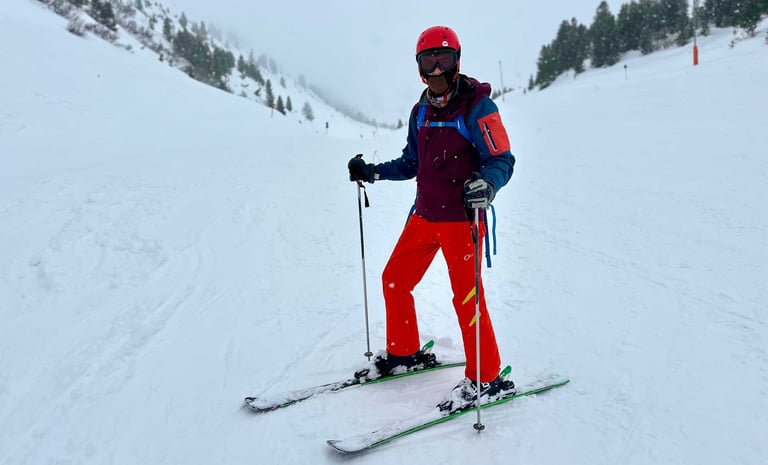

Boots:
Choosing the right ski boots is essential for comfort, control, and performance. Here are a few tips to help you find the perfect fit:
Size: Ski boots should fit snugly but not be too tight.
They should provide support and allow for proper circulation. It's recommended to try on boots in person and consult with a knowledgeable salesperson to ensure the right fit.Flex: Similar to skis, boots have different flex ratings. Softer flex boots are more forgiving and easier to control, while stiffer flex boots offer better responsiveness and power transfer.
Choose a flex rating that matches your skiing level and preferences.
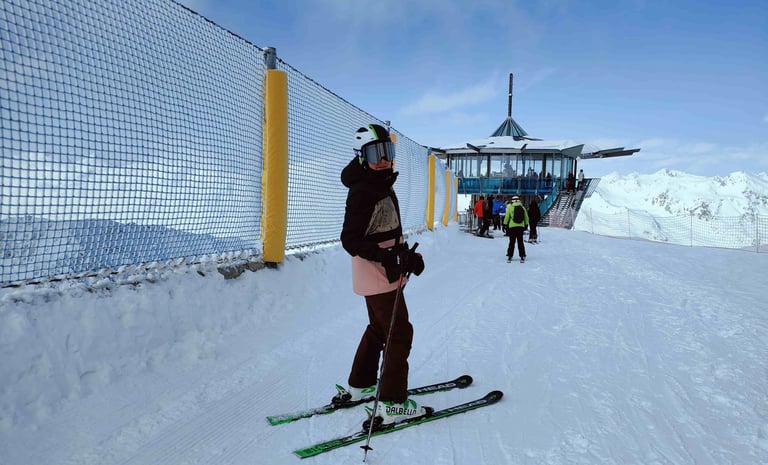

Bindings:
Bindings are the link between your boots and skis, and they play a crucial role in safety and performance. Here are a few key factors to consider when choosing bindings:
DIN Setting: The DIN setting determines how easily your boots release from the bindings in the event of a fall.
The DIN setting should be adjusted based on your weight, skiing ability, and preferences. Beginners generally have lower DIN settings, while more advanced skiers may have higher settings.Compatibility: Ensure that the bindings you choose are compatible with both your boots and skis.
Different binding systems exist, so consult with a professional or refer to the manufacturer's guidelines to ensure compatibility.
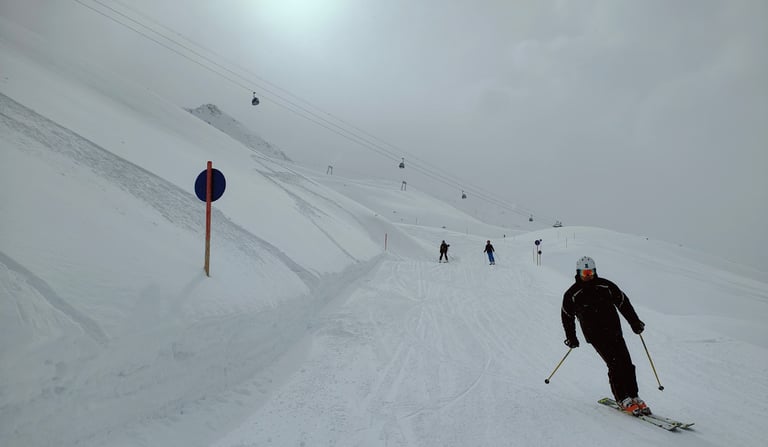

Exploring Different Ski Types
Now that you have a better understanding of how to choose ski equipment, let's explore the different ski types available on the market:
All-Mountain Skis:
All-mountain skis are versatile and suitable for a variety of terrains and snow conditions.
They are a great option for beginners and intermediate skiers who want a single pair of skis that can handle different slopes.
Carving Skis:
Carving skis are designed for groomed slopes and are known for their quick turning ability.
They have a narrower waist width and a deeper sidecut, allowing skiers to make precise and aggressive turns.
Powder Skis:
Powder skis are wider and have a larger surface area, making them ideal for deep snow and off-piste skiing.
They offer better floatation and stability in powder conditions.
Twin-Tip Skis:
Twin-tip skis are popular among freestyle skiers who enjoy tricks and jumps.
They have an upturned tail on both ends, allowing skiers to ski backward and land jumps in both directions.
Freeride Skis:
Free ride skis are designed for skiers who enjoy off-piste and backcountry skiing.
They offer a balance between powder performance and all-mountain versatility, allowing skiers to explore challenging terrain.


